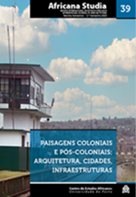Divided Urbanism – On the Spatial Production of Transportation Infrastructures in Livingstone during Late Colonialism
Abstract
While segregation and exclusion were central features of colonialism in Africa, the degrees of segregation as well as their specific manifestations – materially and symbolically, visible and concealed – varied.
Legal procedures, policies and their implementation differed not only between colonialisms but also between colonial territories under the same rule and sometimes even between districts and urban areas within one and the same colonial state. Segregation was not only rendered visible in the physical divide between European and African urban areas but also in the discriminatory practices and uneven provision, distribution of and access to urban infrastructure.
This paper seeks to explore the provision of public transportation infrastructure in Livingstone (Zambia) during the late 1940s and 1950s by discussing the negotiation processes involved in this endeavour and the spatial dynamics and ideologies guiding
these negotiations and its discourses. The data used in this contribution rely on archival documents consulted at the National Archives of Zambia in Lusaka in 2017 and 2018.
Keywords: Urban History, Transportation Infrastructure, Settler Colonialism, Northern Rhodesia.
Downloads
Downloads
Published
How to Cite
Issue
Section
License
Copyright (c) 2024 Africana Studia

This work is licensed under a Creative Commons Attribution-NonCommercial 4.0 International License.
Copyrights of all published material belong to Africana Studia.
Original images supplied by authors will be returned to them if requested


